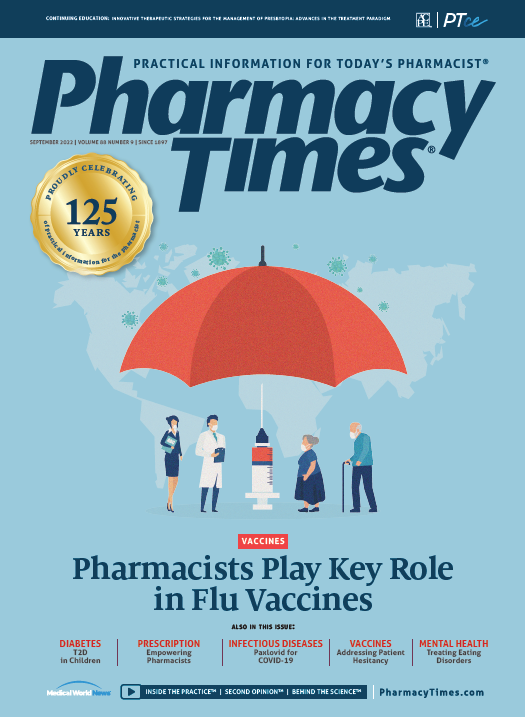Pharmacist Moms’ Dialogues Event Features Vaccination Updates, Addresses Hesitancy
Presentation by Chapman University dean highlights patient relations, staffing issues.
The challenges brought by patient hesitancy issues and the latest in vaccination updates were highlighted at the Pharmacist Moms group’s Dialogues event, held on August 17, 2022, in San Diego, California.
Bonnie Hui-Callahan, PharmD, CDCES, clinical senior programs manager at Capital Rx, hosted the event, which featured a presentation by Jeff Goad, PharmD, MPH, FAPhA, FISTM, FCPhA, FCSHP, CTH, professor of pharmacy prac- tice and associate dean of academic affairs at Chapman University in Orange, California.
“One of the things we’ll talk about when we get to vaccine hesitancy is [that] one of your most powerful roles as a ‘pharmacy mom’ or ‘pharmacy dad’ is being able to relate to your patients, to your friends, [to] your colleagues,”
Goad said during the presentation. “Being able to tell your patients, ‘I got vaccinated, and I vaccinated my kids’ is a very powerful statement.”
During the presentation, Goad estimated that a large number of children have not been caught up on pediatric vaccinations because of the COVID-19 pandemic.
As COVID-19 cases began to drop, vaccination rates began to rebound, but once the Delta variant hit, vaccination rates faltered again, he said.
“What it tells us is that our health care system is very sensitive to fluctuations in government guidelines,” Goad said. “Virtual care doesn’t work for vaccinations...when we switched to that, we saw our vaccination rates begin to fall off; we are still not back [to where we were] for adult vaccinations.”
As an example, Goad said that the California Department of Public Health has been pushing more individuals to go to pharmacies for vaccinations, which is a double-edged sword because of staffing shortage issues. Patients who receive influenza vaccines at pharmacies may also be due for other inoculations, such as pneumococcal vaccines, which adds to the workload.
Staffing shortages also present problems when identifying immunization gaps and contacting patients who are overdue for immunizations. Departments of health want pharmacists to run through lists of patients to identify these patients, but this is a challenging task for pharmacies that are already short-handed.
An emergency order allows pharmacy technicians to administer vaccinations, but it is unclear if that will continue when the order is rescinded.
In the second part of his presentation, Goad discussed vaccine hesitancy, pointing out that data are the most powerful tools when communicating the importance of getting vaccinated. For instance, pharmacists can show patients actual numbers on individuals hospitalized as a result of COVID-19 vs those who received the vaccine.
“I always say misinformation travels much faster than correct information, and once it’s out there, the Internet has no kickback policy. There is no erase button, no backspace... the Internet is there forever,” Goad said.
The key to addressing COVID-19 vaccine misinformation is to discuss the issue in a way that makes sense to patients.
One common myth around COVID-19 vaccines is that that the vaccines were available too quickly, Goad said, but dispelling this and other misinformation can encourage more patients to get vaccinated.
Reference
Goad J. Pharmacist Moms Dialogues. August 17, 2022; San Diego, California.

